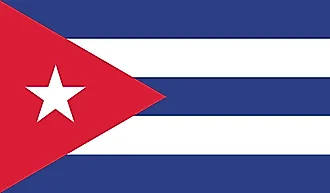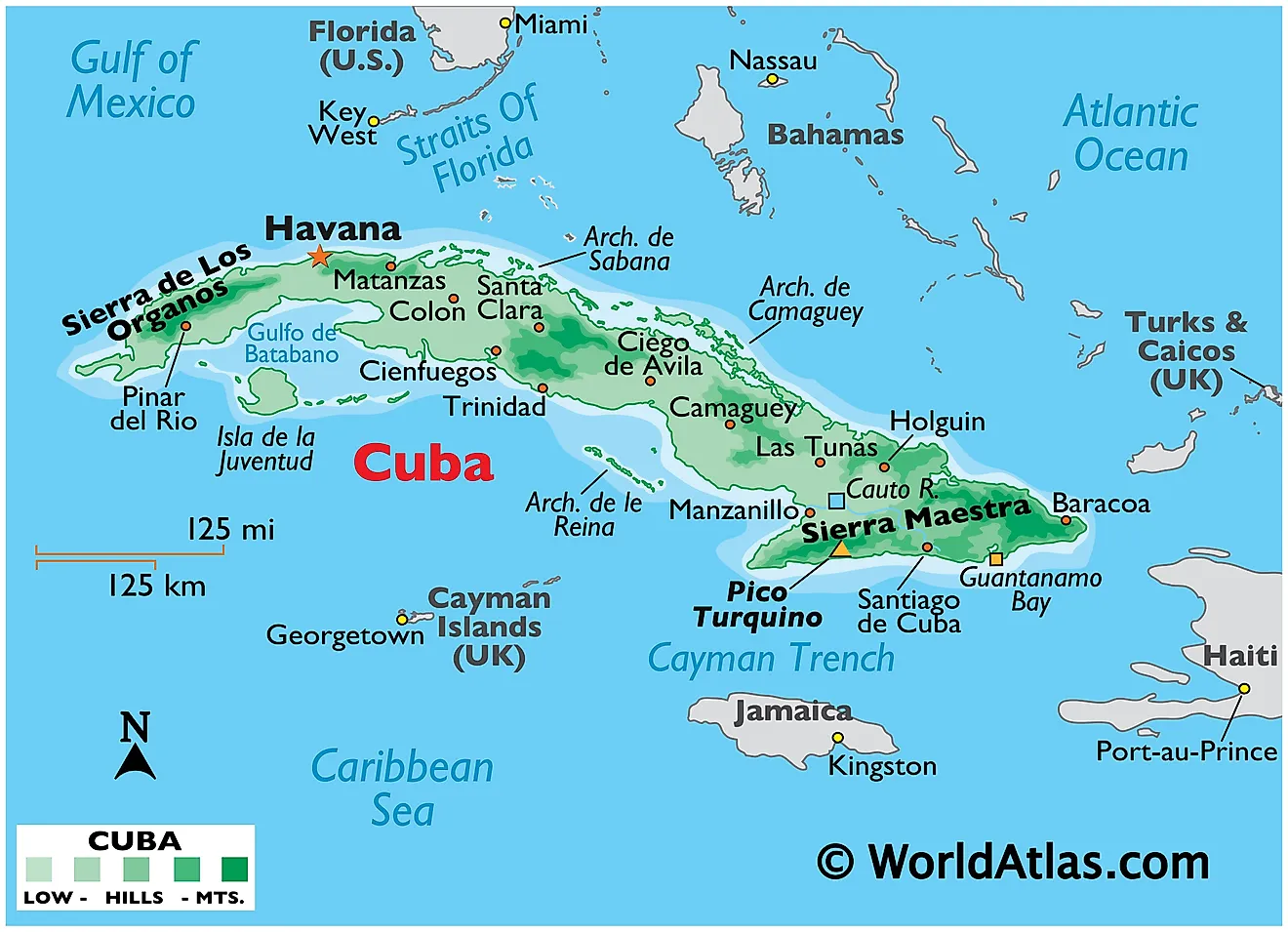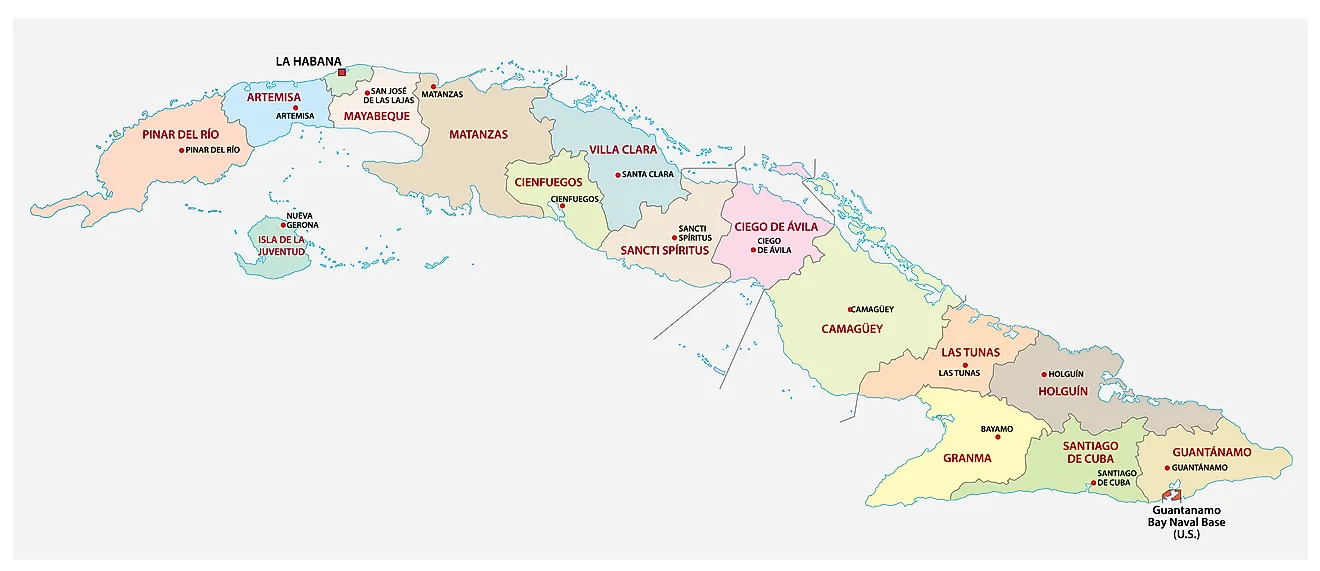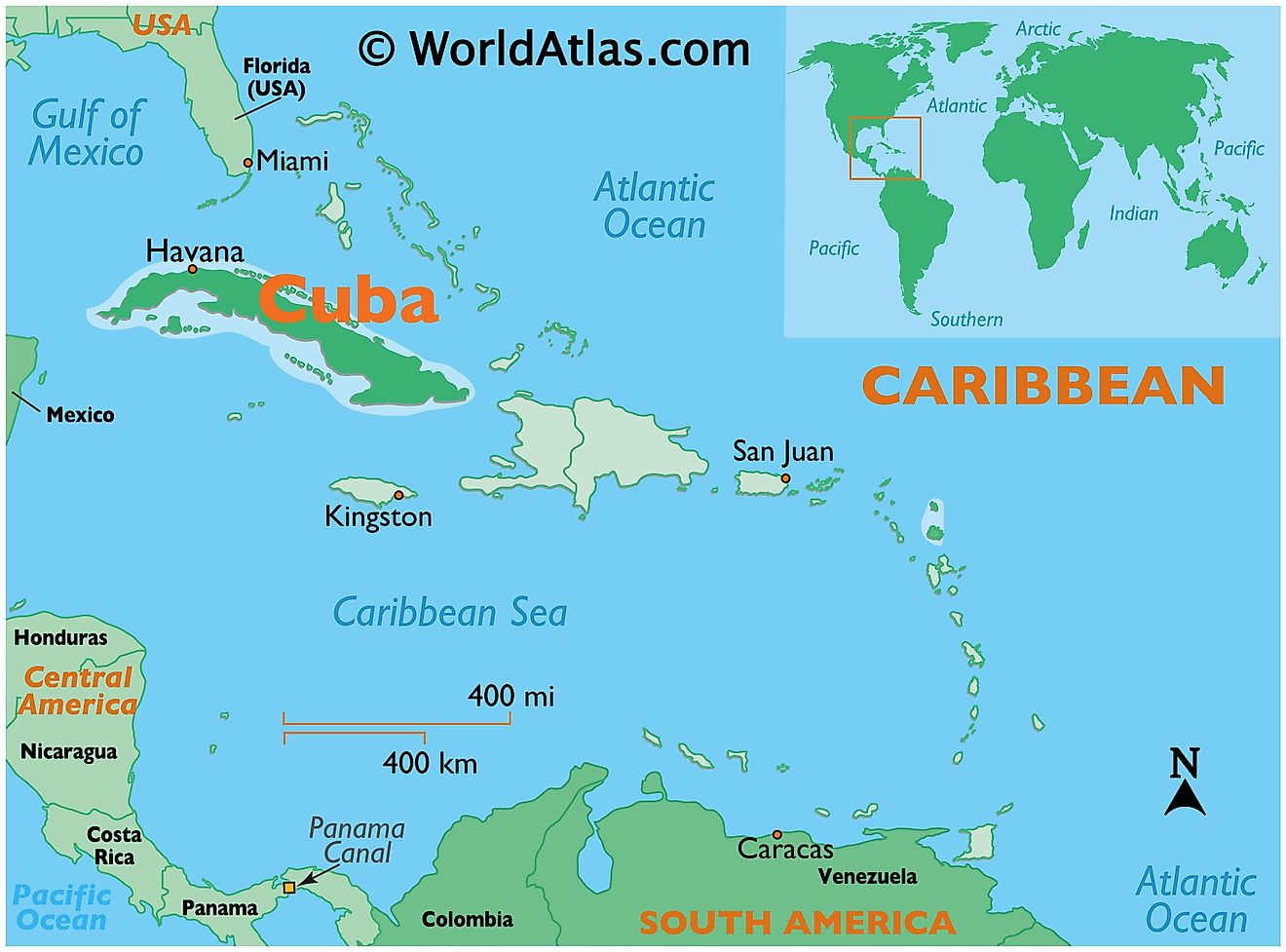Cuba Maps & Facts (original) (raw)
Covering a land area of 109,884 sq. km, Cuba is the largest country by land area in the Caribbean. With an area of 105,006 sq. km, the main island of Cuba is the 16th largest island in the world by land area. Several archipelagos (that include hound reds of island and cay's) ring it’s coastline north and south. Isla de la Juventud (“Isle of Youth”) is the 2nd largest Cuban island and the 7th largest island in the West Indies.
As observed on the physical map of Cuba, Cuba's land is relatively flat, flowing gradually into hills, including a few hills of limestone shown to the right. Cuba's coastal areas are the most mountainous. In the Sierra de los Organos of the far-northwest, the landscape is hilly with a few lower mountains. In the southwest, the Sierra Maestra is a mountain range that rises sharply from the coast. Located there and marked by a yellow triangle, Pico Turquino at 6,650ft (1,999m), is the highest point in Cuba. Other mountain ranges of note are the Sierra Cristal (southeast), the Escambray Mountains (central) and the Sierra del Rosario in the northwest.
Considering its overall size, Cuba has little inland water areas. Those of note include Laguna de Leche at 67.2 sq. km (25.9 sq. mi), and the man-made Zaza Reservoir, at 113.5 sq. km (43.8 sq. mi). Cuba has nearly 200 small rivers as well as many narrow streams that run dry in summer. The country’s longest river is the Cauto; it flows for 230 mi (370 km) from its source in the Sierra Maestra.
Provinces of Cuba Map
Cuba (officially, The Republic of Cuba) is divided into 15 provinces (provincias, sing. provincia) and 1 special municipality (municipio especial). In alphabetical order, the provinces are: Artemisa, Camaguey, Ciego de Avila, Cienfuegos, Granma, Guantanamo, Holguin, La Habana, Las Tunas, Matanzas, Mayabeque, Pinar del Rio, Sancti Spiritus, Santiago de Cuba and Villa Clara. Isla de la Juventud is a special municipality. The provinces are further subdivided into 168 municipalities (municipios).
Located on Cuba’s northern coast on La Habana Bay and to the south of the Coral Cay archipelago of the Florida Keys is, Havana – the capital, the largest and the most populous city of Cuba. It is an administrative center, a major port and an important economic, commercial and industrial hub of Cuba.
Where is Cuba?
Cuba is the largest island country located in the north western Caribbean at the confluence of the Atlantic Ocean, Caribbean Sea and the Gulf of Mexico. It is positioned in the Northern and Western hemispheres of the Earth. Cuba is situated in the east of Yucatan Peninsula (Mexico); to the south of Florida and The Bahamas; to the west of Hispaniola (Haiti and the Dominican Republic) and to the north of Jamaica and Cayman Islands. It is surrounded by the Atlantic Ocean, Cayman Trench, Gulf of Mexico, Straits of Florida and the Caribbean Sea. Cuba shares its maritime borders with the US, Haiti, Honduras, The Bahamas, Jamaica and Mexico.
Regional Maps: Map of North America
Outline Map of Cuba
Key Facts
| Legal Name | Republic of Cuba |
|---|---|
| Flag |  |
| Capital City | Havana |
| 23 07 N, 82 21 W | |
| Total Area | 110,860.00 km2 |
| Land Area | 109,820.00 km2 |
| Water Area | 1,040.00 km2 |
| Population | 11,333,483 |
| Major Cities | La Habana (Havana) (2,148,930) Santiago de Cuba (441,205) Camaguey (312,193) |
| Currency | Cuban pesos (CUP) |
| GDP | $100.02 Billion |
| GDP Per Capita | $8,821.82 |
This page was last updated on February 25, 2021


